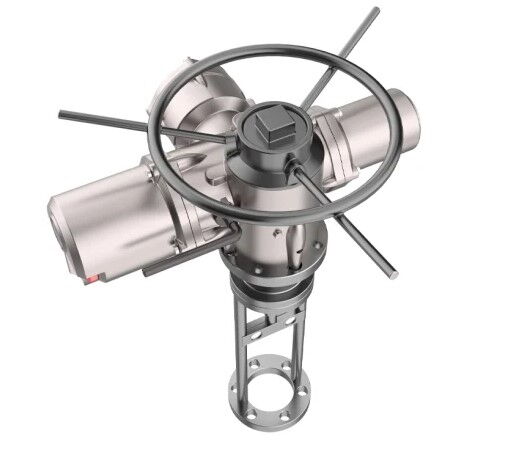How to Deal with Overload in Electric Ball Control Valve Actuators
On this page
Electric actuators for ball control valves are the core components in modern automated control systems. They drive the opening and closing of ball control valves through electrical energy, ensuring precise control and stable operation of the system. However, electric ball control valve actuators may face overload phenomena during actual use, which not only affects the performance of the equipment but may also lead to system failures. Understanding the causes of overload and protective measures is crucial for ensuring the normal operation of the equipment and extending its service life. This article will delve into the main reasons for overload in electric ball control valve actuators, effective protective measures, and troubleshooting methods to help users optimize equipment configuration and enhance system reliability.
Electric ball control valve actuators may encounter overload phenomena during operation, usually caused by a variety of factors. Understanding these causes helps to take timely measures to prevent equipment overload and ensure the stable operation of the actuator.
When the power supply voltage is lower than the rated voltage of the actuator, the actuator cannot generate enough torque. Low voltage causes the actuator to fail to complete its predetermined actions, which may stop the motor or prevent it from working properly.
If the torque limit setting of the actuator is too high, it will generate excessive pressure during operation, which may exceed the design bearing capacity of the equipment, leading to overload. Incorrect torque limit settings may also cause excessive wear or damage to the equipment.
In intermittent use, the heat generated by the electric ball control valve actuator accumulates. If the heat dissipation is insufficient, the generated heat may exceed the allowable temperature rise of the motor, leading to an overload phenomenon. Long-term high-temperature operation affects the performance and life of the actuator.
Faults in the internal circuit of the actuator, such as short circuits or open circuits, can lead to the failure of torque control. Circuit faults may cause the actuator to have excessive or insufficient torque, leading to overload problems.
High ambient temperatures can reduce the thermal capacity of the motor, affecting the normal operation of the electric ball control valve actuator. High ambient temperatures may also accelerate the aging of internal components of the actuator, leading to performance degradation or failure.
To effectively prevent overload phenomena in electric ball control valve actuators and ensure their stability and reliability under various operating conditions, the following protective measures can be taken.
When choosing an electric ball control valve actuator, ensure that its output torque is 1.2 to 1.5 times the maximum operating torque of the selected ball control valve. This ensures that the actuator can work normally under maximum load and avoid overload phenomena.
When setting the torque limit for the actuator, ensure that the set value is reasonable. Torque limits that are too high or too low can affect the normal operation of the actuator. Regularly check and adjust the torque limit settings to ensure they meet actual work requirements.
Choose the appropriate opening and closing speeds according to actual operating conditions. Excessive operating speeds may cause water hammer effects, which can damage the actuator and the system. By optimizing the operating speed, you can reduce the impact on the system and the risk of overload.
In special environments such as unstable current control, corrosive environments, flammable and explosive occasions, special media, and long-term no-maintenance, it is recommended to use explosion-proof electric ball control valves. These valves can effectively cope with various extreme working environments and reduce the occurrence of overload and failures.
Ensure that the working environment temperature of the electric ball control valve actuator is controlled within the range of -25°C to 70°C. Excessive ambient temperatures can cause the motor to overheat, affecting the normal operation of the actuator. If necessary, take cooling measures to protect the equipment.
Thermistors: Used to protect the motor from the effects of continuous operation or intermittent operation overload, maintaining the motor within a safe temperature range.
Thermal Relays: Used to prevent motor blockage. When abnormal temperature or blockage is detected, the circuit is automatically disconnected to protect the motor.
Fuses or Overcurrent Relays: Used to protect the motor from the impact of short circuit accidents. Fuses automatically disconnect when a short circuit or overcurrent occurs, preventing equipment damage.
When an electric ball control valve actuator fails, avoid disassembling it yourself to prevent accidents. Take the following measures for troubleshooting and maintenance.
Check the Power Supply Voltage: Ensure that the power supply voltage is stable within the rated range, and adjust or replace the power supply as necessary.
Verify the Torque Limit Settings: Check whether the torque limit settings of the actuator meet the actual needs and adjust unreasonable settings.
Inspect the Internal Circuit: Check the internal circuit and repair or replace the relevant components in a timely manner when a fault is found.
Clean the Heat Dissipation Channels: Regularly clean the heat dissipation channels of the actuator to ensure good heat dissipation effect.
In the application of electric ball control valve actuators, the phenomenon of overload is an issue that cannot be ignored, as it may pose a serious threat to the stability of the equipment and system. By understanding the potential causes of overload and taking corresponding protective measures, such as reasonably selecting output torque, setting the correct torque limit, controlling ambient temperature, and using explosion-proof equipment, the risk of overload can be effectively reduced, ensuring the efficient operation of the electric ball control valve actuator. In addition, timely troubleshooting and maintenance are also key to ensuring the long-term stable operation of the equipment.

